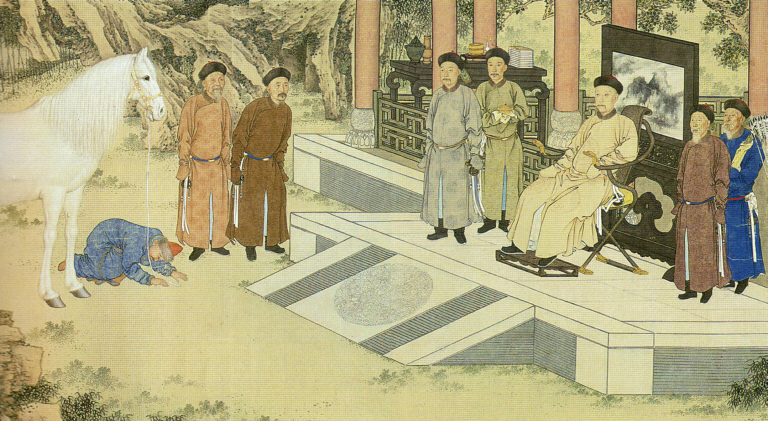Nomad Power: Three Essays


Note: Students in Dr. Daniel Prior’s course, HST 324 Eurasian Nomads and History, analyze primary sources in relation to historical literature and draw their own conclusions in dialogue with both types of sources. Three students in the Fall 2017 class wrote excellent papers on three different eras where the history of nomad power is fraught with interpretive challenges. Yasha Shatalov, a Russian, East European and Eurasian Studies major, sorted out multipolar relations among the expanding Russian and Qing empires and the nomadic Kazakhs and Kirghiz in the eighteenth century. Madilyn Clawson, a History major, examined the formation of the Second Türk Empire in the eighth century CE by contrasting the perspectives of Türk and Chinese primary sources. Ruilin Shi, a Mathematics & Statistics major, developed a historiographically sensitive theory of nomad state formation based on the historical case of the Xiongnu confederation and empire north of China (from approximately the third century BCE to the third century CE).
The temporally and geographically diverse cases all focus on peoples of the Central Eurasian steppes or grasslands; a common thread running through the three contributions is the recognition that sedentary powers seeking to extend their influence into the steppe zone from outside its periphery and nomads seeking to expand their influence within and beyond the steppes often had differing views of each other’s powers and intentions. Taken together, the three authors’ contributions show Miami undergraduates using challenging source material to make sophisticated historical arguments.